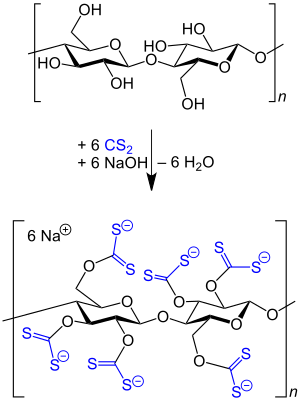Hey parents! Did you know wrapping your baby in Cellophane is the very best way to produce oxygen deprivation-induced brain damage your child? It's quick! It's easy! It's fun! Why not get together with your friends and wrap up your babies together? You'll have a barrel of laughs watching all those little brain cells die right before your eyes!
生產[編輯]
木頭、棉花、大麻屬植物和其他一些物質中提取出的纖維素,再經過鹼和二硫化碳的處理之後可以形成黃酸纖維素。再將其溶於稀氫氧化鈉溶液中,去除多餘的二硫化碳,並將黃酸纖維素水解成纖維膠。再利用稀釋的硫酸和硫酸鈉溶液再次轉變為纖維素後才可以使用,同時還需要除去其中的硫磺、漂白並添加甘油以防脆裂。也有其他的處理方法。
歷史[編輯]
玻璃紙的發明人是瑞士化學家雅克·E·布蘭登堡,最初受僱於Blanchisserie et Teinturerie de Thaon。[1]Cellophan這個詞是由「cellulose」(纖維素)和「diaphane」(透明的)二詞合成的。[2]
布蘭登堡花去了數年時間來完善玻璃紙,例如添加了甘油來軟化這種材料。1912年,他建造了一架機器來生產這種材料,即後來的玻璃紙,同年他將玻璃紙註冊為專利。[2]1913年,一家叫做Comptoir des Textiles Artificiels的公司買下了屬於Thaon的玻璃紙,並將布蘭登堡安置到新公司La Cellophane SA中。[3]
1912年,Whitman's(美國最大最古老的盒裝巧克力品牌)計劃使用玻璃紙為旗下產品包裝。直到1924年左右杜邦在美國建起第一個玻璃紙生產廠為止,它一直是最大從法國進口玻璃紙的進口商。不過最初玻璃紙在美國並不流行,因為它雖然防水但是卻無法防潮,故而不適用於需要防潮的產品。為此杜邦雇傭了化學家William Hale Charch,花去三年時間發明了一種可以塗在玻璃紙表面的硝化纖維漆來防潮。[4]1927年這種防潮的玻璃紙誕生後,在1928年至1930年的三年間,其銷量劇增三倍。1938年,杜邦10%的銷售產品都是玻璃紙,佔據了公司總利潤的25%。[3]
Wikipedia
Cellophane was invented by Swiss chemist Jacques E. Brandenberger while employed by Blanchisserie et Teinturerie de Thaon.[1] In 1900, inspired by seeing a wine spill on a restaurant's tablecloth, he decided to create a cloth that could repel liquids rather than absorb them. His first step was to spray a waterproof coating onto fabric, and he opted to try viscose. The resultant coated fabric was far too stiff, but the clear film easily separated from the backing cloth, and he abandoned his original idea as the possibilities of the new material became apparent.
It took ten years for Brandenberger to perfect his film, his chief improvement over earlier work with such films being to add glycerin to soften the material. By 1912 he had constructed a machine to manufacture the film, which he had named Cellophane, from the words cellulose and diaphane ("transparent"). Cellophane was patented that year.[2] The following year, the company Comptoir des Textiles Artificiels (CTA) bought the Thaon firm's interest in Cellophane and established Brandenberger in a new company, La Cellophane SA.[3]
Whitman's candy company initiated use of cellophane for candy wrapping in the United States in 1912 for their Whitman's Sampler. They remained the largest user of imported cellophane from France until nearly 1924, when DuPont built the first cellophane manufacturing plant in the US. Cellophane saw limited sales in the US at first since while it was waterproof, it was not moisture proof—it held water but was permeable to water vapor. This meant that it was unsuited to packaging products that required moisture proofing. DuPont hired chemist William Hale Charch, who spent three years developing a nitrocellulose lacquer that, when applied to Cellophane, made it moisture proof.[4] Following the introduction of moisture-proof Cellophane in 1927, the material's sales tripled between 1928 and 1930, and in 1938, Cellophane accounted for 10% of DuPont's sales and 25% of its profits.[3]



沒有留言:
張貼留言